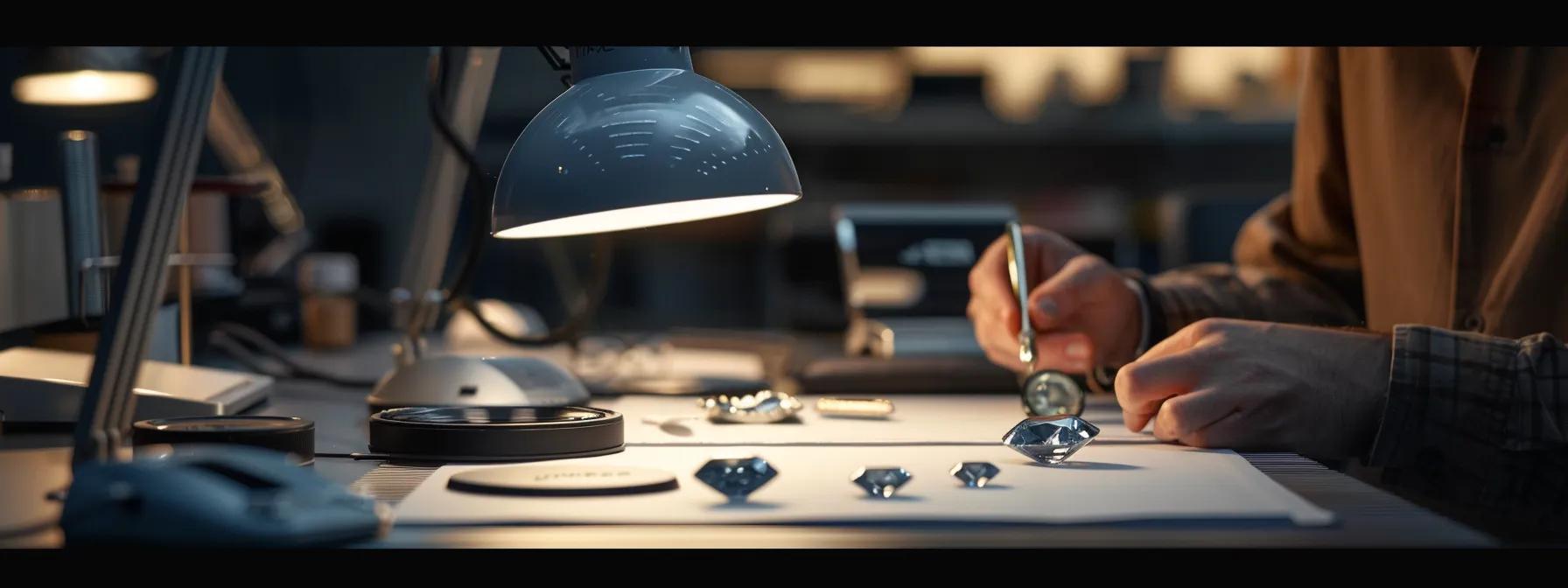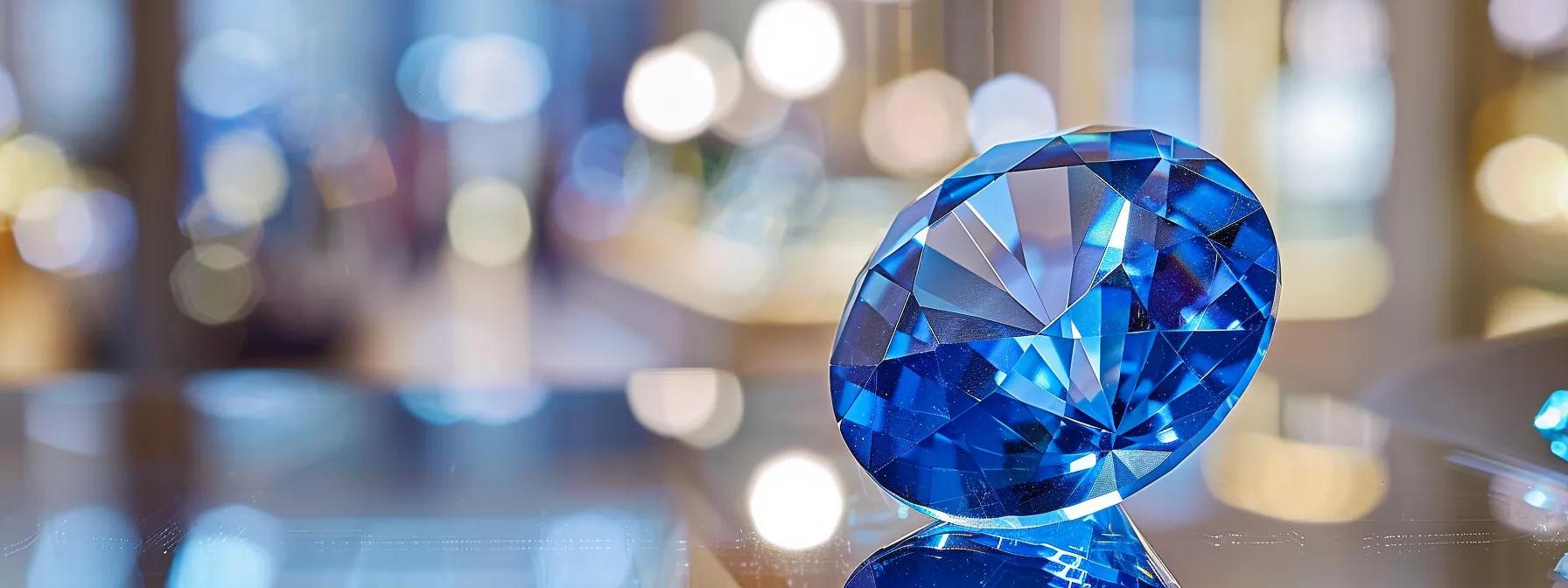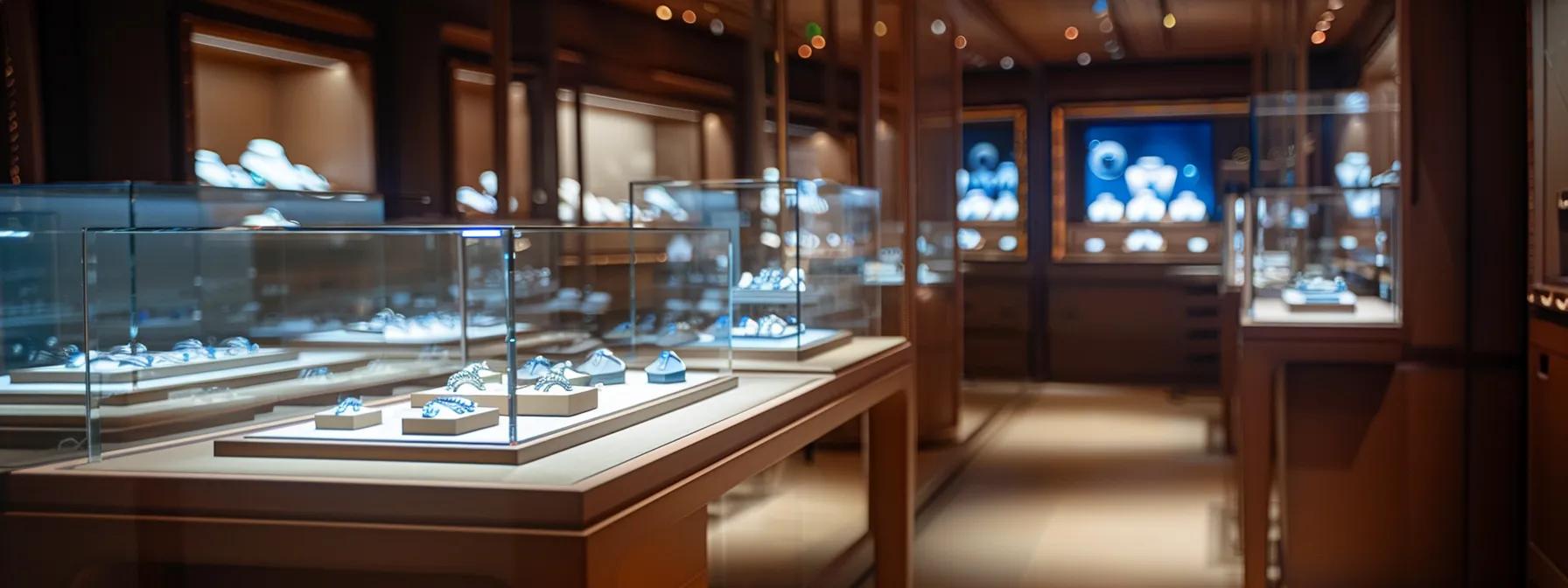
Table Of Contents:
- How to Tell if a Sapphire Is Real: Expert Methods to Identify Authentic Sapphires
- What Are the Key Signs of a Real Sapphire?
- How to Test Sapphire Authenticity at Home?
- What Are the Most Reliable Professional Sapphire Authenticity Tests?
- What Are Common Characteristics of Fake Sapphires?
- How to Choose a Certified Gemologist or Testing Lab for Sapphire Verification?
- How to Use Online Tools and Resources to Identify Real Sapphires?
- What Are the Best Practices to Avoid Buying Fake Sapphires?
- Table: Key Attributes of Real Versus Fake Sapphires
- How to Use Online Tools and Resources to Identify Real Sapphires?
- What Are the Best Practices to Avoid Buying Fake Sapphires?
- Frequently Asked Questions
- Final Thoughts
How to Tell if a Sapphire Is Real: Expert Methods to Identify Authentic Sapphires
The allure of a sapphire lies in its striking beauty, rich history, and cultural significance. Buyers often struggle to determine if a sapphire is genuine or an imitation. With growing demand for ethically sourced, high-quality stones, knowing how to identify a real sapphire is essential. Expert gemologists combine visual evaluation, light tests, and advanced technology to reveal a stone’s true nature. This guide explains the key signs of sapphire authenticity, how various tests work, and the methods professionals use to distinguish genuine sapphires from fakes. Understanding these factors—color, clarity, weight, and density—will boost purchasing confidence and support ethical supply chains. Whether you are a collector or buyer, both home-based methods and professional tests can help you choose certified experts before purchase.
With transparency in the jewelry industry and the popularity of custom engagement rings featuring sapphires, being informed is more important than ever. The methods discussed cater to both amateur jewelers and professional buyers, enhancing confidence with every decision.
What Are the Key Signs of a Real Sapphire?
A real sapphire exhibits qualities that set it apart from imitations. The most notable sign is the natural depth of its color. Genuine sapphires display vibrant hues—typically intense blues or other natural colors—with subtle variations that mimic natural formation, unlike the flat appearance of synthetic stones.
How Does Color Indicate Sapphire Authenticity?
Color is a primary criterion in assessing sapphire authenticity. Real sapphires show lively saturation from vivid royal blue to soft pastel shades. Their color distribution is non-uniform, with natural gradients and slight zoning caused by trace elements such as iron, titanium, and chromium. This results in a “velvety” or “silky” appearance that lab-created or treated stones rarely reproduce.
What Role Does Clarity Play in Identifying Real Sapphires?
Clarity is crucial for determining authenticity. Natural sapphires contain tiny, irregular inclusions that attest to their natural origin. While some inclusions may enhance value, overly flawless clarity may indicate a synthetic or treated stone. Observing the inclusions under a jeweler’s loupe helps experienced gemologists assess authenticity and overall quality.
How Can Weight and Density Help Confirm a Genuine Sapphire?
Genuine sapphires have a high specific gravity, making them denser and heavier than common simulants. Their density, usually between 3.95 and 4.03 g/cm³, combined with an internal crystal lattice that affects light refraction, confirms authenticity. Advanced tools like densitometers can measure these properties accurately, distinguishing real sapphires from imitation stones.
How to Test Sapphire Authenticity at Home?

Expensive laboratory tests are not always necessary; several simple home tests can help assess a sapphire’s authenticity. While these do not replace professional analysis, they provide useful initial assessments for potential buyers.
What Simple Visual Tests Can You Perform on a Sapphire?
A practical starting point is a visual inspection. Using a magnifying glass or jeweler’s loupe, closely examine the sapphire’s color, surface texture, and natural imperfections like inclusions or subtle color zoning. Testing the stone under both natural and artificial light conditions can reveal variations in depth and vibrancy that are typical of genuine sapphires.
How to Use the Scratch Test to Check Sapphire Hardness?
The scratch test is a simple method based on the Mohs scale of hardness; sapphires rate at a 9. To perform this test, gently rub the stone against an unglazed porcelain surface. A real sapphire should resist scratches, whereas a softer imitation may show marks. However, caution is advised to avoid damaging the gemstone, and the scratch test should be considered only a preliminary indicator.
Can Heat or Light Tests Help Identify a Real Sapphire?
Additional at-home tests include exposing the sapphire to controlled heat or strong light (including UV light). Genuine sapphires, due to their high melting points and stable crystal structures, show minimal physical change when heated. Under UV or strong light, a real sapphire may exhibit a characteristic scintillation or “fire,” while synthetic stones might show unnatural uniformity. These tests, though informative, should be performed carefully.
What Are the Most Reliable Professional Sapphire Authenticity Tests?
Professional gem laboratories use advanced techniques that provide quantitative data, greatly increasing accuracy over home tests. Methods such as refractive index measurement, spectroscopy, and ultraviolet fluorescence testing yield reproducible results. Certification from accredited institutions like the Gemological Institute of America (GIA) provides authoritative assurance of a sapphire’s authenticity.
How Do Gemologists Use Refractive Index to Verify Sapphires?
Gemologists measure the refractive index (RI) of a sapphire, which for genuine stones typically falls between 1.76 and 1.78. Using instruments like a refractometer, experts observe light bending through the stone to confirm its optical properties, which are expected in natural corundum.
What Is the Role of Spectroscopy in Sapphire Identification?
Spectroscopy analyzes the absorption and transmission of light within a gemstone. In genuine sapphires, this analysis reveals distinctive absorption lines caused by trace elements. Using instruments like a UV–VIS–NIR spectrometer, gemologists can detect whether a stone has been artificially enhanced or verify if it is naturally occurring.
How Does UV Light Reveal Fake Sapphire Characteristics?
Under ultraviolet light, authentic sapphires typically exhibit weak to moderate fluorescence due to natural lattice irregularities and the presence of trace elements. In contrast, synthetic or treated sapphires may not fluoresce or might display abnormal fluorescence patterns. This difference helps experts reliably identify counterfeit stones.
What Are Common Characteristics of Fake Sapphires?

Despite improvements in synthetic production, fake sapphires still display certain telltale signs. They often show uniform color without the natural zoning of real sapphires, overly flawless clarity without natural inclusions, and slight discrepancies in weight and optical properties.
How to Spot Synthetic or Lab-Created Sapphire Features?
Synthetic sapphires tend to have a “perfect” appearance with consistently uniform color and clarity. In contrast, natural sapphires exhibit minute inclusions and subtle color zoning. Using a microscope or a loupe reveals that lab-grown stones often lack the natural imperfections seen in their mined counterparts.
What Inclusions or Flaws Indicate a Fake Sapphire?
While natural inclusions enhance a sapphire's authenticity, fake sapphires may contain synthetic inclusions—such as uniform gas bubbles or repetitive patterns. The absence of natural flaws like rutile needles or irregular crystal growth may also signal a counterfeit.
How Do Color and Transparency Differ in Fake Sapphires?
Fake sapphires can display anomalies in color intensity and transparency. Real sapphires have complex, variable color saturation influenced by trace elements and inclusions, giving them depth and natural gradation. In contrast, imitations often appear flat or overly uniform, with light either passing through too evenly or being blocked excessively.
How to Choose a Certified Gemologist or Testing Lab for Sapphire Verification?
For reliable verification, choose a certified gemologist or accredited testing laboratory. Look for credentials from recognized organizations such as the GIA or the International Gemological Institute (IGI). Reputable labs use state-of-the-art equipment and provide detailed reports including measurements of refractive index, density, and clarity.
What Credentials Should a Gemologist Have for Sapphire Testing?
A qualified gemologist should be certified by international institutions like the GIA, IGI, or Gemmological Association of Great Britain (Gem-A). Their training and experience in assessing various gemstones, including sapphires, ensure accurate testing using current technology.
How to Find Accredited Labs for Sapphire Authenticity Tests?
Accredited laboratories can be located through professional associations and registrar directories. Many established jewelers collaborate with these labs, and online reviews can further confirm a lab's reputation. Ensure that the lab provides comprehensive reports with spectroscopic and refractive index data.
What Questions to Ask Before Submitting a Sapphire for Testing?
Before testing your sapphire, inquire about: - The lab’s accreditation and certifications. - The specific tests they perform. - Sample reports from recent tests. - Turnaround time and cost for the analysis.
These questions help gauge the lab’s reliability and commitment to accuracy.
How to Use Online Tools and Resources to Identify Real Sapphires?

Many online tools and educational resources can supplement physical tests. Interactive quizzes, comparison charts, and video tutorials provided by gemological experts help buyers understand what to look for when assessing sapphire authenticity. Although these tools are not a substitute for professional testing, they empower buyers with useful knowledge.
What Interactive Quizzes Help Test Sapphire Authenticity?
Interactive quizzes on reputable gemology websites challenge users with high-resolution images to identify natural inclusions, color zoning, and other authenticity markers. These quizzes provide immediate feedback that deepens understanding and prepares buyers for more expert evaluations.
How to Interpret Online Guides and Comparison Charts?
Online guides and comparison charts offer side-by-side visual analyses of real versus fake sapphires. They outline benchmark values for refractive index, density, and color saturation, helping buyers compare observed properties against expected norms. This visual reference aids in self-assessment prior to professional consultation.
Where to Access Free Sapphire Identification Resources?
Authoritative organizations such as the GIA and IGI, as well as reputable jewelry retailers, offer free resources including downloadable charts, step-by-step tutorials, and educational videos. These resources provide a solid foundation for understanding gemstone characteristics and assessing authenticity.
What Are the Best Practices to Avoid Buying Fake Sapphires?
Avoiding fake sapphires requires diligence, research, and purchasing from reputable sources. Always request detailed documentation and authenticity certificates. Review seller feedback, verify secure payment methods, and confirm clear return policies to safeguard your investment.
How to Verify Seller Reputation and Reviews?
Research the seller’s reputation by consulting customer testimonials, independent ratings, and feedback on reputable websites and forums. Established sellers often provide third-party lab reports and belong to recognized industry organizations, which adds to their credibility.
What Payment and Return Policies Protect Buyers?
Secure payment options that include fraud protection and clear, buyer-friendly return policies are critical. These measures ensure that if a sapphire is misrepresented, you can safely recover funds and have the stone re-evaluated. Always review these policies before finalizing a purchase.
How to Request Authenticity Certificates and Documentation?
Request detailed gemological reports from accredited labs, which include measurements such as refractive index, specific gravity, and clarity. Certificates from institutions like the GIA provide reassurance that the gemstone has been rigorously tested and meets high standards.
Table: Key Attributes of Real Versus Fake Sapphires
Before buying, consider this table summarizing the crucial differences:
| Attribute | Real Sapphire | Fake Sapphire |
|---|---|---|
| Color Distribution | Natural, non-uniform, vibrant hues with subtle zoning | Even, uniform color; may appear synthetic |
| Clarity | Contains natural inclusions and imperfections | Flawless or uniformly synthetic inclusions |
| Density | High, specific gravity between 3.95 and 4.03 g/cm³ | Lower or inconsistent density |
| Refractive Index | Typically between 1.76 and 1.78 | Deviates from the natural range |
| Fluorescence | Characteristic weak to moderate UV fluorescence | None or abnormal fluorescence |
By comparing these attributes, buyers can better assess whether a sapphire is genuine.
After reviewing these criteria, use objective measures and professional verification to avoid counterfeit purchases.
How to Use Online Tools and Resources to Identify Real Sapphires?
Online resources—such as interactive quizzes, comparison charts, and instructional videos—can greatly assist in preliminary identification before making a purchase. These tools clarify complex gemological concepts and enhance your ability to recognize natural sapphire characteristics.
What Interactive Quizzes Help Test Sapphire Authenticity?
Numerous gemology education websites offer quizzes that challenge you to identify natural inclusions and color variations based on high-resolution images. The instant feedback helps solidify your understanding of what makes a sapphire genuine.
How to Interpret Online Guides and Comparison Charts?
These guides break down the subtle differences between real and fake sapphires through side-by-side comparisons and benchmark data (such as refractive index and density values). Such visual aids enable you to cross-check a gemstone's traits against established norms.
Where to Access Free Sapphire Identification Resources?
Many respected institutions like the GIA and IGI, along with reputable jewelry blogs, offer free downloadable guides, charts, and video tutorials. These resources are excellent for building foundational knowledge before consulting a professional.
What Are the Best Practices to Avoid Buying Fake Sapphires?

To invest in a genuine sapphire, use the following best practices: conduct thorough research, verify seller reputation, insist on third-party certification, and review payment and return policies carefully.
How to Verify Seller Reputation and Reviews?
Check customer reviews, independent ratings, and verify if the seller provides third-party lab reports. Trusted sellers typically have a long history and are affiliated with industry organizations.
What Payment and Return Policies Protect Buyers?
Opt for transactions that use secure payment methods and offer clear return or exchange policies. These safeguards protect you against fraud and ensure recourse if the gemstone fails to meet promised standards.
How to Request Authenticity Certificates and Documentation?
Always ask for a complete gemological report from an accredited lab. This documentation should include detailed measurements and clarity assessments, confirming the sapphire’s authenticity and quality.
Frequently Asked Questions
Q: What is the significance of color zoning in a sapphire? A: Color zoning—a natural variation in hue due to trace elements—indicates authenticity because genuine sapphires display subtle, non-uniform patterns that are hard to replicate artificially.
Q: How reliable is the scratch test for determining sapphire hardness? A: The scratch test is a basic, non-destructive way to gauge hardness on the Mohs scale (sapphires score 9). It is indicative but should be confirmed by advanced measurements.
Q: Can UV light testing definitively identify fake sapphires? A: UV testing is helpful because real sapphires exhibit characteristic, weak to moderate fluorescence. However, definitive identification relies on combined tests such as refractive index and spectroscopy.
Q: Why do professional gemologists rely on refractive index measurements? A: Because refractive index is a quantifiable measure of how light interacts with a gemstone’s crystal structure. For sapphires, an RI between 1.76 and 1.78 is expected in natural corundum, differentiating it from synthetics.
Q: What should buyers look for in an authenticity certificate? A: Look for certificates from accredited labs (e.g., GIA or IGI) that include detailed reports on color, clarity, density, refractive index, and treatments. These standardized measurements confirm authenticity.
Q: How can I use online quizzes to improve my gemstone identification skills? A: Online quizzes simulate real-world scenarios and test your ability to detect natural imperfections and irregularities. They enhance your understanding of genuine sapphire characteristics.
Q: Are return policies and secure payment options truly important when buying sapphires online? A: Yes, robust return policies and secure payment methods protect you from fraud and ensure you have recourse if the gemstone is misrepresented.
Final Thoughts
Real sapphires captivate with beautiful hues and natural variations that require careful assessment to confirm their authenticity. By combining visual tests, scientific measurements, and professional certifications, you can accurately determine a gemstone’s true nature. Use both home-based evaluations and expert lab reports to make informed decisions. Following best practices and working with certified professionals will help you invest confidently in genuine sapphires that enhance your collection and fine jewelry creations.


